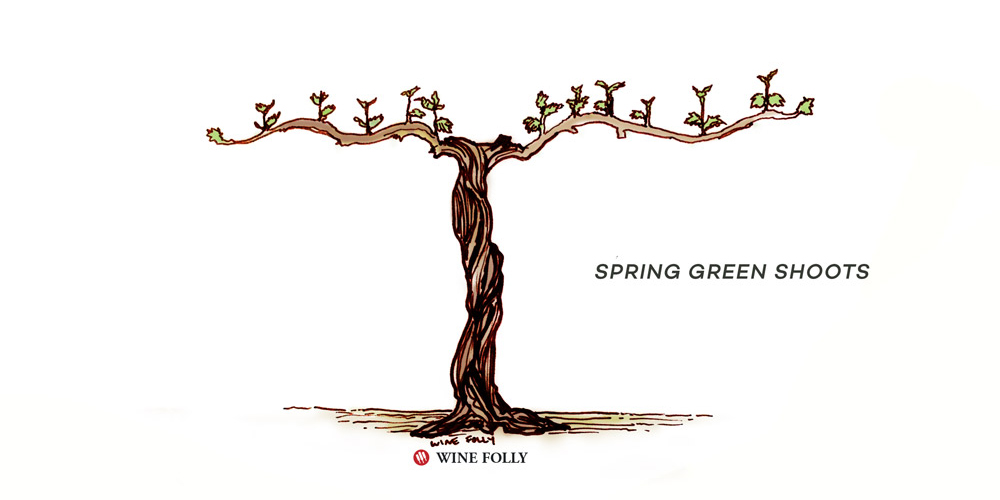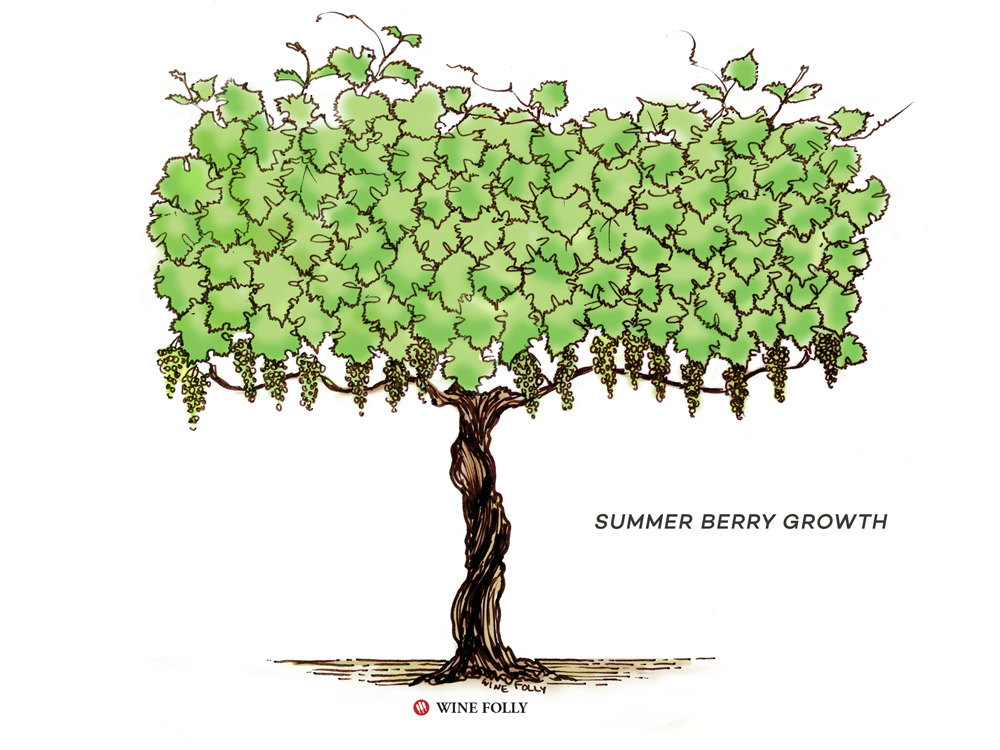You may have heard the phrase “great wine is made in the vineyard,” and it’s true! Great wines come from great grapes. So, let’s take a look at the lifecycle of a grapevine and learn how each season affects that year’s vintage.
Grapevine Basics
Grapevine is an example of a perennial plant; one that grows or blooms over the spring and summer dies back during the autumn and winter months and then repeats the cycle from its rootstock the following spring. Without human intervention, grapevines will naturally grow into a bushy-tree-like mess of leaves and branches. Meticulous pruning and training help the vines stay organized, and focus their energy on growing impeccable grapes.
More than sixty different species of grapevines exist, but the majority of the world’s quality wine production stems from one type, Vitis Vinifera. Vines with North American lineage are rarely used on their own for wine, and are mostly used for either their roots or to grow delicious table grapes.
The first year of growth in a vine’s life is meant to build up nutrient stores, like when we’re told as kids to eat our spinach, so we grow up big and strong. For a vine to concentrate its energy on developing a robust root system, flower clusters are cut back. Producing fruit so early on is a lofty goal, to the vine’s detriment; as is said, we should learn to walk before we run.
Usually, by the third year of growth, a vine is ready to produce the fruit of proper quality for winemaking. A grapevine matures for up to 30 years, before slowing down dramatically in vigor (tell me about it!), wherein the commercial term “old vines” may be applied by some wineries (a term with no official definition, btw).
During the first few years of a vine’s life, the growth of the permanent wood (trunk) and building a robust root system is the name of the game. Vines need different types of TLC.
The Lifecycle of a Grapevine
One of the most expensive and most important activities in the vineyard (besides harvest) is winter pruning. The pruner cuts back the prior year’s canes and chooses the best canes to grow new shoots. The pruning system used is determined during the vineyard design, but it is possible to change the way vines are trained from season to season if vigor (over or underproduction) is an issue.
During April/May (Sept/Oct in the Southern Hemisphere), the first signs of life occur, sap rises, and the buds begin to break. The buds are extremely delicate during this time, for spring hailstorms can destroy them. For example, in Beaujolais, France, during the 2016 vintage, some vineyards lost 100% of their buds from hail.
After the buds break in early spring, they continue to grow. Some viticulturists prune the downward-facing shoots to ensure that all the shoots grow upward, reducing the potential crop size. This strategy involves reducing the quantity to increase quality because vines that produce limited numbers of grapes produce more concentrated grapes.
The flowers of grapevines are called perfect flowers: they pollinate themselves without the need for bees.
In June and July (Nov/Dec in SH), young clusters begin to appear. These clusters will eventually become berry bunches.
In mid to late summer, the green berries start to change color and ripen. This period is called vérasion (“verre-ray-shun”), and it’s the most beautiful time of the year in a vineyard when the berries change colors from a vegetal green to yellow, pink, red or purple. Just before vérasion begins, some winegrowers do green harvesting, wherein a little excess weight is removed from the vines (the superficial grape bunches) so that the vines can focus their energy on their real friends. Er, grapes focus on their remaining grapes.
The wood continues to ripen throughout the summer, turning brown and hardening (e.g., vines lignify). In tandem with wood growth, the grapes continue to ripen, and sugar levels rise. Harvest usually occurs sometime between September to November or February to May in the southern hemisphere, when the grapes reach their perfect ripeness. Viticulturists and harvesters work around the clock to pick the grapes in time. Grapes do not continue to ripen once picked.
In the late fall, some producers leave a few bunches on the vine for a late-harvest wine. Dessert wine comes from pressing these late picked and raisinated (dried out) grapes. At this point, the vine has stopped producing carbohydrates from the chlorophyll in the leaves. The leaves then lose their color and fall to the ground.
During the winter, the foliage dies off, pruners trim the vines, and the cycle begins again.

How Vines Are Trained
See a catalog of the ways vineyards are trained.










